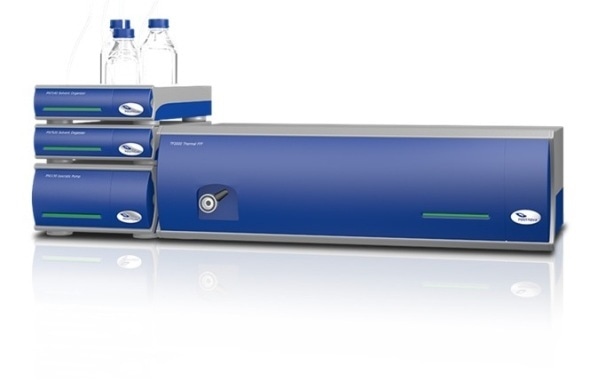Postnova Analytics reports on how Thermal Field Flow Fractionation has been successfully used to elucidate the core microstructure, morphology and chain arrangement of self-assembling block copolymers. This pioneering study was undertaken by the renowned research group under Professor H Pasch at the Department of Chemistry and Polymer Science, University of Stellenbosch (South Africa).

“Thermal FFF data has proved invaluable in advancing our research”, commented Professor Pasch“. He added:
It allows us to separate and understand polymer species that we otherwise would not be able to, adding a new dimension to our analytical capability."
Thermal Field-Flow Fractionation is a technique which is ideally suited for the characterization of polymers, gels and nanoparticles using different organic solvents and to get additional chemical information about the polymers. Different from the other Field-Flow Fractionation sub-techniques, Thermal Field-Flow Fractionation can separate polymers not only by molar mass but also by chemical composition at the same time. Thus, Thermal Field-Flow Fractionation can separate two polymer fractions of different material but same molecular weight into independent peaks.
The self-assembly of block copolymers (BCPs), as a result of solvent selectivity for one block, has recently received significant attention due to novel applications of BCPs in pharmaceuticals, biomedicine, cosmetics, electronics and nanotechnology. The correlation of BCP microstructure and the structure of the resulting self-assemblies requires advanced analytical methods. However, traditional bulk characterization techniques are limited in the quest to provide detailed information regarding molar mass (Mw), hydrodynamic size (Dh), chemical composition, and morphology for these self-assemblies.
In the new study, thermal field-flow fractionation (ThFFF) was used to investigate the impact of core microstructure on the resultant solution properties of vesicles prepared from polystyrene-polybutadiene block copolymers (PS-b-PBd) with 1.2- and 1.4-polybutadiene blocks, respectively.
The researchers at the University of Stellenbosch were able to successfully separate, using ThFFF, micelles prepared from BCPs of similar PS and PBd block sizes. Furthermore, it was established that for the vesicles and homopolymers of similar surface chemistry and Dh, ThFFF was sensitive towards the inherent differences in morphology and chain arrangement, enabling the two polymeric species to be successfully separated.
The measurements for this research study were performed using a Postnova Analytics TF2000 thermal field-flow fractionation system coupled in series to MALS and RI detectors as well as a Malvern Instruments Zetasizer Nano system.